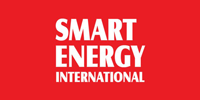
NYSERDA’s filing is “an enormously positive step” in the state’s deployment goals, Bill Acker, executive director of New York Battery and Energy Storage Technology Consortium (NY-BEST), told Utility Dive. It will advance New York’s goal to reduce greenhouse gas emissions 40% by 2030 and shift to 100% carbon-free electricity by 2040, he said.
The plans follow Gov. Cuomo’s announcement earlier this month of new emissions regulations aimed at phasing out less efficient power plants and encouraging plant owners to replace the lost capacity with battery storage or other clean energy options. Along with the storage target, the state also wants to add 9,000 MW of offshore wind by 2035 and 6,000 MW of distributed solar by 2025.
Under NYSERDA’s plan, “incentives are offered at a fixed amount per AC kWh of usable storage capacity.”
Retail incentives can be applied to standalone or paired storage projects of 5 MW or less, considered on a first-come, first-serve basis, starting at $350/kWh and winding down as each funding block is filled.
Bulk incentive programs are offered in all state investor-owned utility service areas besides that of Consolidated Edison, which is running its own bulk incentive program. Projects under 20 MW will receive a projected $110/kWh, ramping down $10 each year until 2025, subject to market changes. Projects over 20 MW that will begin operation within the next two years will receive either $85/kWh or $75/kWh, depending on the class year.
According to Acker, the bulk market storage incentives were not included in the original January plan and were added in response to stakeholder input.
read more







Recent Comments